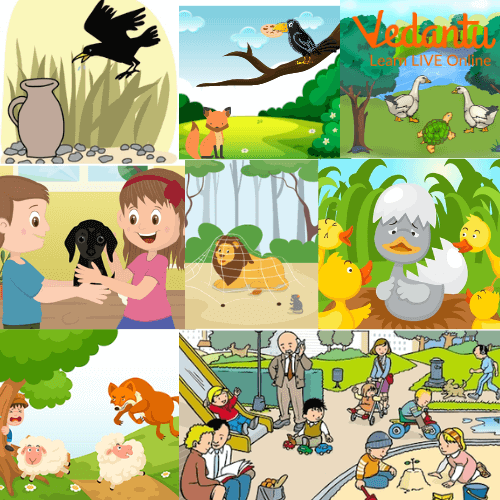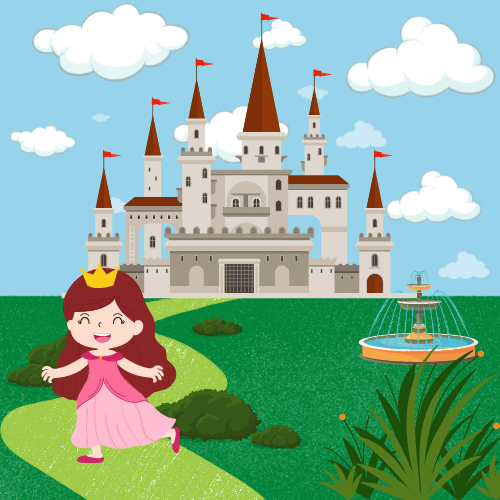Story Plots

An Introduction to the Story Plots
The story plot is the series of events that take place within the story and normally follows a cause-and-effect pattern. The story plot is the main material for our work. It is the things that happen, the steps that take place, and the part that is bound to be comic, charming, and captivating. A story plot should involve themes that can be always understood by most children: friendlessness, shortage of understanding, concern over making new friends, or any first-time experiences you also went through while growing up. Your fears, memories, and feelings are all workable fodder for children’s stories. We should keep the story plots in our minds while writing a story.
Seven Basic Story Plots
There are seven basic important Children story plots which are discussed below.
Overcoming The Monster: The protagonist sets out to beat an antagonistic force (often evil) that pressurises the protagonist's and/ or protagonist's homeland. Examples - Perseus, Theseus, and Beowulf.
Rags to Riches: The bad protagonist obtains power, wealth, and/or a mate, loses it all and gains it back, getting bigger as a person as a result. Examples - Cinderella, Aladdin, A little princess, the red and the black.
The Quest: The protagonist and companions make a start to obtain an essential object or to get to a location. They face desires and other barriers along the way. Examples – The Pilgrim’s Progress, The Lord of the Rings, and The Divine Comedy.
Voyage and Return: The protagonist ventures into a foreign land and returns with experience, having overcome the war or having learned essential lessons only found in this place. Examples – Ramayana, Odyssey, The Hobbit.
Comedy: Light and funny character with a happy or happy ending; a dramatic work in which the central motif is victory over difficulty leading to a successful or happy conclusion. Booker points out that comedy is more than just a funny side. It refers to a pattern where the dispute becomes increasingly confusing but, in the end, becomes clear in a single clarifying event. Most romance films fall into this category. Examples – The Wasps, Auricularia, The Arbitration.
Tragedy: The protagonist is a hero with a major character fault or a major fault that will finally bring him down. Her unlucky ending motivates kindness for her folly and the reduction of a good character. Examples - Anna Karenina, Carmen.
Rebirth: An event forces the main character to change their ways and many times become a better person. Examples are Pride and Prejudice, The Frog Prince, and The Snow Queen.

Some Story Plots
Short Story Writing Ideas for Kids
With these short story writing ideas, children will have a chance to write exciting new stories and to think about the importance of storytelling. Story plotting is an important part of every child’s learning and development and these plots help children get motivated. Some of them are as follows:-
A young boy who loves magic tricks.
Tell the story of a scar.
A middle-aged woman locates a ghost.
A long journey is interfered with by disaster.
At school or work, you get an uncommon task.
You tried a new restaurant. The chef comes out and tells about him or her.
You meet someone with the same name.
You have to give a speech.
You win a big prize from a local radio contest.
You wake up from an especially realistic dream.
Step-by-step Guidance for Writing a Story
Steps toward writing a story can be a fun or challenging activity. By designing and writing a story, children acquire the knowledge to put their thoughts in order. The steps are as follows:
Step 1 - Think of a plan
Step 2 - Initiate a character and create a setting
Step 3 - The beginning
Step 4 - The difference of opinion
Step 5 - The turning point
Step 6 - The decision
Step 7 - The end

Imagination of a Child’s Own Story
Summary
In this article, we have discussed the short story plots which are very important for kids. We have also acquired a knowledge of seven basic Children story plots and short story writing ideas for kids in this article. There are seven basic Children story plots and short story plots - Overcoming the Monster, Rags to Riches, The Quest, Voyage and Return, Voyage and Return, Comedy, Tragedy and Rebirth. The writers can choose from any one of them and start developing a story by first creating a character and a setting, then by taking the story at a slow pace, then giving a turning point and an end.


FAQs on Story Plots
1. Why are writing prompts helpful?
Here are some reasons why prompts are so helpful. They are as follows:-
Practise the Language - Creative writing prompts are simple and easy, fun ways to practise.
When You Have No Plans and are Confused – When your creativity is warmed up, you will start to come up with your plans.
To Develop Your Plans – Use the story ideas below to think about your ideas
They are Fun – Fun is also one of the most creative parts of writing prompts.
2. How to write good story plots?
We have several thoughts and steps for writing good story plots. That is Plan your story, brainstorm your ideas, develop your ideas, develop your characters, write your story, write the opening, use effective dialogue, involve sensory elements, establish your story, read and edit, and give your story a title, publish your story, and summarise. These are the best and simple facts for writing good story plots for kids.
3. What are the three main elements of a good story plot?
There are three elements to a good plot: challenge, conflict, and character.
4. What is the factor that even makes a diverse story useless?
A story may not be useful to the reader if it lacks a moral.
5. Why should kids be encouraged to write stories?
Kids should be encouraged to write stories. It is a wonderful way for them to express their thoughts and feelings as they find their voice while they are learning how to form sentences. Stories provide young people with an opportunity to learn about themselves and how they can use the written word so that it might help improve their lives. This may also be a path by which children can develop a healthy respect for reading, something that will have benefits throughout their lives.




